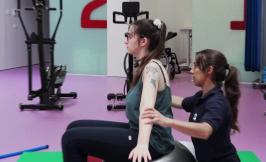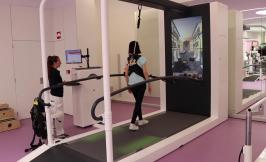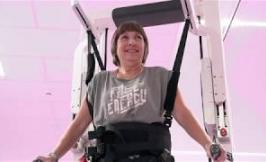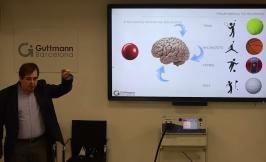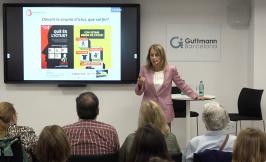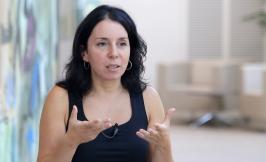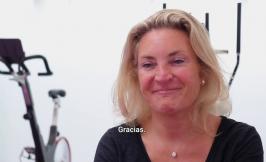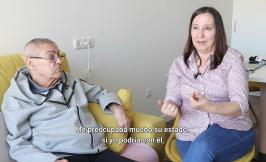Stroke
A stroke is a cerebrovascular accident that appears suddenly and unexpectedly. It is a medical emergency that requires immediate treatment. Early action can reduce brain damage and the possibility of complications to a minimum.
A stroke or cerebrovascular accident can be caused by a blocked artery (ischaemic stroke) or by a burst blood vessel (haemorrhagic stroke). Some individuals may have just a temporary interruption of blood flow to the brain (transient ischaemic attack) that does not cause permanent damage.
- Types of stroke
-
- Ischaemic stroke. Almost 80% of strokes or cerebrovascular accidents are ischaemic. This means that the stroke is caused by a narrowing or blockage of the arteries that lead to the brain, causing a severe reduction in blood flow (ischaemia). A thrombotic cerebrovascular accident is caused when a blood clot (thrombus) forms in one of the arteries that supplies blood to the brain. A blood clot can be made up of fatty deposits (plaque) that build up in the arteries and cause a reduction in blood flow (atherosclerosis) or other diseases of the arteries. An embolic cerebrovascular accident occurs when a blood clot forms far from the brain, often in the heart, and travels through the bloodstream before lodging in the narrowest cerebral arteries. This type of blood clot is called an “embolism”.
- Transient ischaemic attack. A transient ischaemic attack is caused by a temporary reduction in blood to one part of the brain with the appearance of symptoms of an ischaemic stroke but which can last just a few minutes. A transient ischaemic attack occurs when a blood clot or particles block the flow of blood to one part of the nervous system, but permanent damage is not caused in the tissues and there are no long-lasting symptoms.
-
Haemorrhagic stroke. A haemorrhagic stroke or haemorrhagic cerebrovascular accident is caused when a blood vessel in the brain bursts, causing a haemorrhage. A haemorrhagic stroke can be caused by different conditions that affect the blood vessels, such as uncontrolled high blood pressure (hypertension), excessive treatment with anticoagulants, and weak areas in the walls of blood vessels (aneurysms). A less frequent cause of haemorrhage is the breakage of a tangle of abnormal blood vessels with weak walls (arteriovenous malformation).
- Symptoms of a stroke
-
Patients present the following symptoms when they have a stroke:
- Sudden intense headache that may be accompanied by vomiting, dizziness or an altered state of consciousness
- Problems speaking and understanding
- Paralysis or numbness of the face, arms or legs, most likely on only one side of the body
- Blurred or obscured vision in one or both eyes
- Loss of balance or loss of coordination
The consequences of a stroke depend on where the lesion is located and its size. There may sometimes be temporary or permanent disability, but in any of the aforementioned cases, the sooner the correct neurorehabilitation treatment by an expert multidisciplinary team is started, the better the long-term functional results.
A stroke in the right hemisphere of the brain often affects the left-hand side of the body and can present problems with space perception or left neglect (objects and people to the left of the patient are ignored). A stroke in the left hemisphere usually affects the right-hand side of the body (right hemiplegia) and causes alterations to language to which we refer generically as aphasia.
A stroke in the cerebellum area of the brain brings about problems with coordination, lack of balance, dizziness, nausea and vomiting. A stroke caused in the brainstem can be more serious as all involuntary functions like breathing, heartbeat, arterial pressure, etc. are controlled in this area, as are functions like swallowing, speaking, hearing and eye movements.
In general terms, here is a summary of the consequences of strokes or cerebrovascular accidents:
- Paralysis or loss of movement and/or muscle strength in one side of the body or, in very severe cases, in all four extremities. Physiotherapy helps with recovery, although the success of treatment varies from one person to another.
- Difficulty speaking (dysarthria) and swallowing (dysphagia), due to problems with muscle control of the mouth, pharynx or larynx.
- Language disorders or aphasia, with difficulty in understanding, reading or writing, or difficulty emitting words and phrases that interfere in communication. Therapy with a speech and language pathologist is useful in these cases.
- Memory loss or reasoning difficulties.
- Depression and emotional problems.
- Pain, numbness or other strange sensations in parts of the body affected by the stroke. For example, if a cerebrovascular accident leads to a loss of feeling in the left arm, the patient will possibly start to feel unpleasant tingling in that arm. Sometimes the pain that appears is complex and difficult to treat, potentially turning into a long-term problem. This complication is known as central pain or central pain syndrome. It generally appears several weeks after a cerebrovascular accident and can improve in time. Nevertheless, as the pain is caused by a problem with the brain and is not in a physical location, the treatment programme has to be multifactorial and not just using medication.
- Changes in behaviour. People who have suffered a stroke might become more introverted and antisocial or more impulsive.
- Treating a stroke
-
A stroke requires a highly specialised neurorehabilitation process aimed at restoring, minimising and/or compensating functional alterations. Guttmann Barcelona provides patients with comprehensive personalised care offered by an expert multidisciplinary team.
With scientific rigour, a humane approach and all the experience of the Institut Guttmann, we treat stroke patients using the most cutting-edge technologies and applying specific clinical procedures that can bring about significant qualitative improvements. The quality of life of people affected by a stroke can be considerably improved by using the right treatments and working to achieve the highest possible degree of autonomy.
- Risk factors of stroke
-
Many factors can increase the risk of suffering a cerebrovascular accident, and many are the same as those that increase the possibilities of suffering a heart attack. Some of these factors cannot be treated, such as age or the genetic factor, but most are preventable and can be controlled. Some factors are related to lifestyle and others with medical risks: in patients who have had a stroke, there is a higher risk of suffering a second episode and measures should be taken to help prevent another cerebrovascular accident. The doctor will recommend the key factors in each case and set out advice that it is essential to follow. In general, the main recommendations for a healthy lifestyle are as follows:
- Control high blood pressure (hypertension)
- Do daily exercise
- Control stress
- Eat a healthy diet
- Reduce the amount of cholesterol and saturated fats in the diet
- Stop smoking
- Treat obstructive sleep apnoea
Cognitive rehabilitation with Guttmann, NeuroPersonalTrainer® is neuropsychological rehabilitation treatment, which is an active process that helps the patient to optimise the recovery of higher functions (attention, perception, memory, executive functions, calculation...) to better understand the alterations presented and to develop strategies to compensate f

The personalised stroke neurorehabilitation programme is aimed at patients who have suffered a stroke and who have the capacity to actively collaborate in a personalised outpatient neurorehabilitation programme. The techniques used are physiotherapy, occupational therapy, neuropsychology and speech therapy.

This personalised training and improved functionality programme is aimed at optimising and maintaining functional capabilities, as well as preventing complications associated with disability issues.

The treatment of dysphagia is very important for people who suffer from this condition after a stroke, traumatic brain injury (TBI) or other causes.

The treatment of aphasia with transcranial magnetic stimulation is aimed at patients with non-fluent aphasia, that is, aphasias with difficulty for verbal expression that maintain an acceptable capacity in language comprehension.

Neuropsychological rehabilitation or neuropsychological treatment is an active process that helps patients and their families to better understand the difficulties they present, develop strategies that optimize their higher functions, compensate for neuropsychological disorders and optimize higher functions.

Music therapy is one of the treatment options available at Guttmann Barcelona, for both adult and paediatric patients affected by neurological injuries or diseases at different stages within the rehabilitation process.

This programme of treatment of neuropathic pain through transcranial stimulation and virtual reality is designed for patients who have suffered a neurological injury and present neuropathic pain after their rehabilitation process is finished, or people in a chronic phase who want to relieve their pain
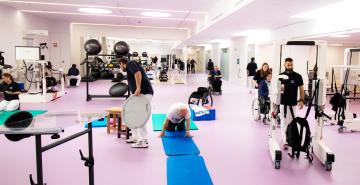
Guttmann Barcelona offers a treatment programme of physiotherapy and gait rehabilitation in a group, with sessions based on shared rehabilitation goals, with activities being planned around these goals in both the rehabilitation room and the swimming pool.

Guttmann Barcelona has launched its programme of psychology group sessions, as the social aspects associated with group therapy provide additional benefits to those of the treatment itself, due to the positive impact that spending time with other people has on our mood and cognitive response.
Et pot interessar
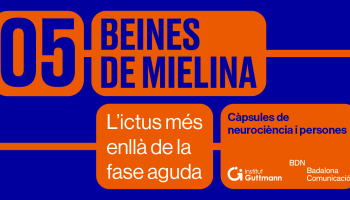 Friday, 29 September, 2023
Stroke beyond the acute phase
Friday, 29 September, 2023
Stroke beyond the acute phase
Strokes are the leading cause of adult acquired disability and the second leading cause of dementia. The sequelae can be very diverse and...
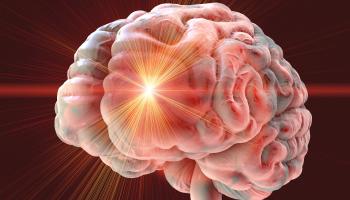 Thursday, 17 February, 2022
Aphasia, a consequence of brain damage
Thursday, 17 February, 2022
Aphasia, a consequence of brain damage
Types of aphasia and evolution People with non-fluent aphasia show reduced expression, often with difficulty articulating words. Their...
 Monday, 30 March, 2020
Robótica para la rehabilitación
Monday, 30 March, 2020
Robótica para la rehabilitación
El uso de la tecnología en el marco de un programa de rehabilitación integral ofrece la oportunidad de aumentar la intensidad y la...

